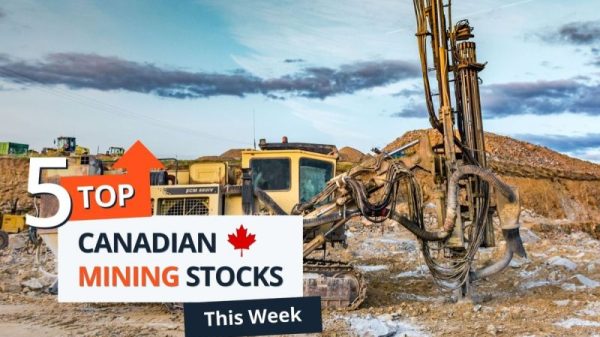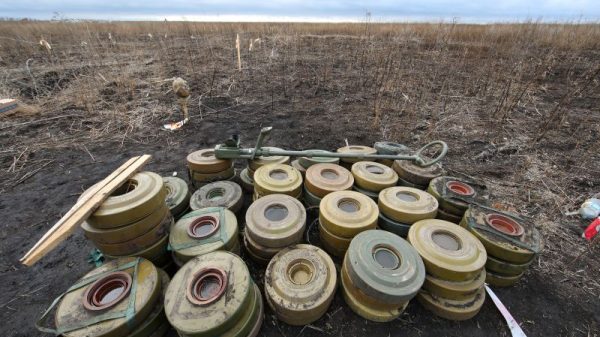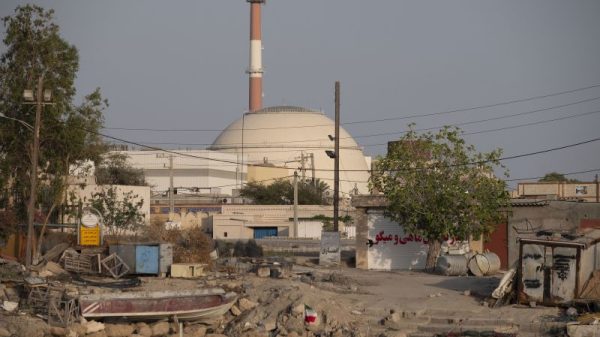On the roof of the O2 Arena, one of London’s largest indoor venues, there’s a small cluster of very peculiar wind turbines.
They look nothing like the tall, imposing ones that are increasingly deployed both inland and offshore around the world — at less than six feet (1.8 meters) in height, they’re a fraction of their size, and produce much less energy.
But being small gives them a strategic advantage: they can be deployed almost anywhere, and were designed to be retrofitted onto existing streetlights, where they can be powered not just by the wind, but also by the artificial breeze created by passing vehicles.
“If you stand next to the road and a bus comes past, you feel that airflow,” says Barry Thompson, CEO of Alpha 311, the company that designed the turbines. “Why is nobody harnessing the energy that cars are generating when they drive past?”
Now, after the successful trial at the O2, Alpha 311 is preparing to launch a refined version of the turbine that will be suitable for commercial installations.
Like an F1 car
Alpha 311 was founded by Thompson and mechanical engineer John Sanderson, after they built a prototype of the turbine in Thompson’s backyard during the Covid-19 lockdowns of 2020. They then produced a more polished version with the help of an external company, and posted pictures of it on Thompson’s LinkedIn profile.
After it was featured in local news reports, it attracted the attention of the O2. “The facilities manager actually saw it and said, ‘Can we have these on the O2?’ He purely wanted to help a startup and provide some real-world testing,” Thompson says.
Three of the turbines were installed on the O2, although one was removed after storm Eunice, which damaged the venue in 2022.
Made of carbon fiber, the same material as an F1 car, each turbine is 5.9 feet (1.8 meters) tall and weighs about 88 pounds (40 kilograms), but the section that actually turns only weighs just over 30 pounds. “We designed a wind turbine that is very, very light,” Thompson says. “It turns so much more easily than a heavier glass fiber or metal wind turbine. And we use streetlights for the road installation because the pole is already connected to the grid.”
He adds that because the cabling in streetlights was designed for traditional lighting fixtures, which required far more energy than current LED bulbs, the infrastructure necessary to handle the electricity produced by the turbine is already in place. The energy can be used immediately to power the streetlight, and the excess can be sold back into the grid, providing a revenue stream for the local authority that manages or owns the road.
The turbine can capture the wind, but it’s intended to harness the air movement of passing vehicles. Thompson says that a small car passing the turbine at 50 miles per hour displaces air at 12 miles per hour, enough for the turbine to rotate. On a highway installation, each turbine can produce 30 times the power of a 300W solar panel, on average, and the equivalent of about 14 panels while on a building.
For the past year, Thompson has been working on a scalable, commercial version of the turbine. “We’ve been doing computational fluid dynamics and redesigning the turbine to be most efficient,” he says. “We’re now going into the wind tunnel with a UK university, and then we’ll start selling that product.”
He says he has received interest from over 900 entities in 117 countries, between private companies and local authorities, with around 70 proposals already in place for actual installations. Among them are stadiums, factories, warehouses, bridges, toll roads and gas stations.
The first public road with an Alpha 311 installation will be in the borough of Telford and Wrekin, near Birmingham in England. The company expects to install up to 181 turbines in the first half of next year, which it says will render the council’s 20,000 streetlights carbon neutral.
Extra sensors
According to Alasdair McDonald, a professor at the School of Engineering of the University of Edinburgh, in Scotland, who is not involved with Alpha 311, the idea is intriguing, but he notes that there are constraints with the size and location of the turbines. “Small wind turbines generally produce less per area of rotor, because they are lower down than big wind turbines and hence see less wind at every moment in time,” he says.
“The wind also tends to be more turbulent, which can make it difficult to extract energy and can cause extra loads. There’s also a tension between extracting energy from vehicle wakes and from the general wind: roads are often purposely shielded from the wind.”
Alpha 311 says that each installation location is analyzed to determine traffic flow, the number and size of vehicles and the average traffic speed. It adds that if installed in the center of a highway, the airflow is effectively doubled, which means “up to eight times more volume of air that can be converted into energy.” The company also notes that many key roads that have trees or fencing to minimize noise can provide a tunneling effect on the wind, so the turbines can work even when the traffic is light, like late at night.
McDonald adds that the mounting onto lampposts is the innovative aspect of the turbine, but it could be challenging to retrofit them onto existing ones.
At £15,000 (about $18,000) each, the turbines are expensive, but can significantly reduce electricity bills for an organization that installs them, and then generate free electricity, producing a return on the investment in just a few years, according to Thompson.
On top of producing energy, the turbines can also be fitted with sensors to monitor the air quality or traffic flow. As for scaling up, Thompson expects to install 200 turbines next year, before moving into the thousands after manufacturing processes improve.
“Deploying renewable technologies such as ours locally has a direct benefit for the local communities,” he says. “That’s key if we’re going to move to a decentralized, renewable energy-driven society.”







































